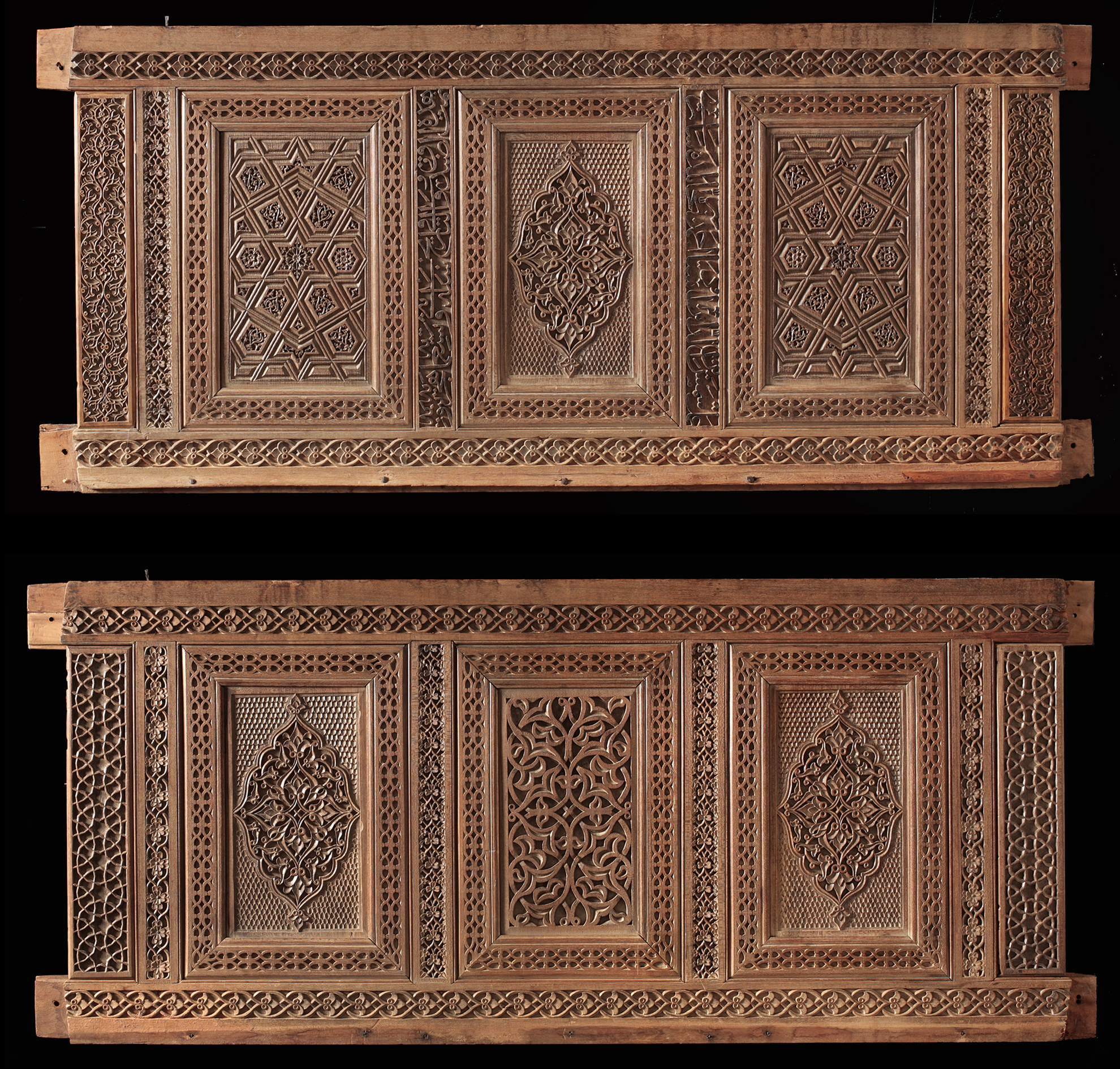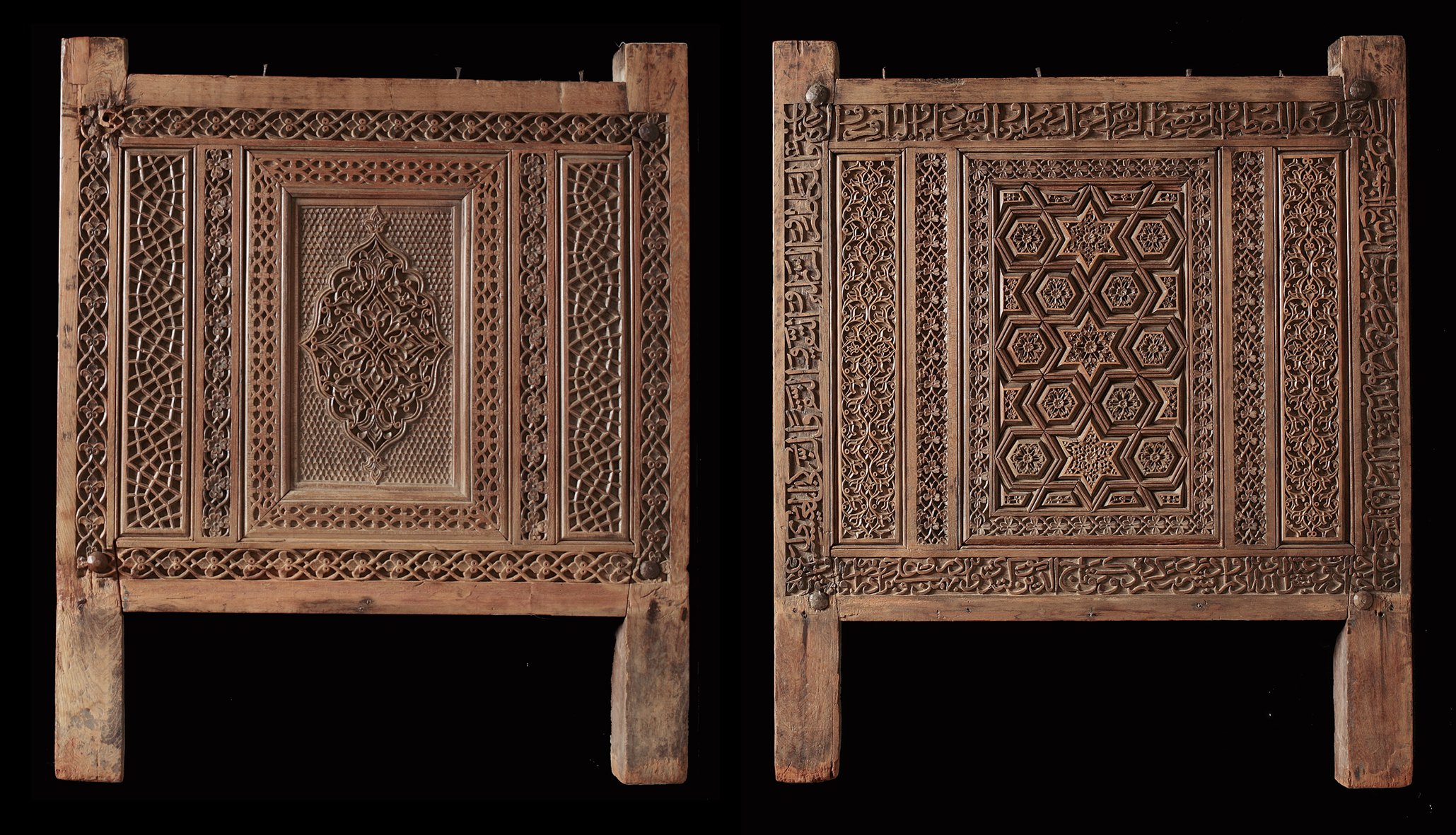 Print Page
Print Page
 Print Page
Print Page
Location: Iran, Caspian region
Materials: wood, carved
Dimensions: 120 x 185 x 100cm (approximately, when assembled)
Accession Number: MXD 220
Other Notes:
Shrines in Islam are often associated with burials of saints, either genuine or suppositious, or, especially in Iran, with descendants of the Shi‘ite imams. The ritual of visitation generally involves circumambulating the tomb, which is often emphasised by a cenotaph (‘empty tomb’), a wooden or stone construction that recalls a sarcophagus. These may have elaborate panelling set in a strapwork skeleton, but in northern Iran in the Caspian area (Mazandaran and Gilan) wood was so abundant that, as here, they were constructed of large panels carved in imitation of strapwork panels, and with lavish inscriptions, which slotted into square corner posts.
The inscriptions on this cenotaph include a prayer to the ‘Fourteen Immaculates’, Muhammad, Fatimah and the Twelve Shi‘ite Imams; a record of the donors, Darwish ‘Abdallah, his brother, Darwish Rustam and other individuals; and the signature of the craftsman, Shams al-Din ibn Ustad Ahmad najjar-i balada-yi Sari (‘Shams al-Din, the son of the cabinet-maker and joiner Ahmad, in the town of Sari’). His signature is recorded on woodwork in various shrines in northern Iran.
Bibliography:
J.M. Rogers, The Arts of Islam. Masterpieces from the Khalili Collection, London 2010, cat.243, pp.202–3.

